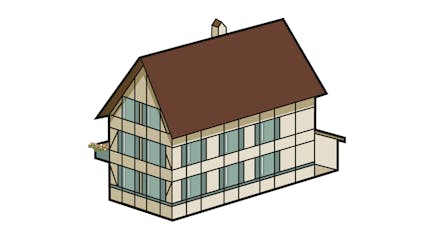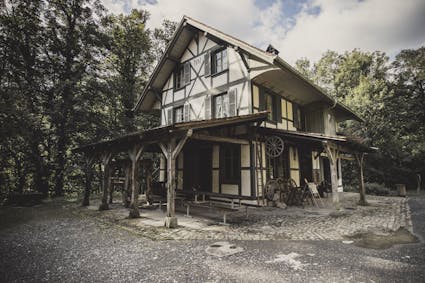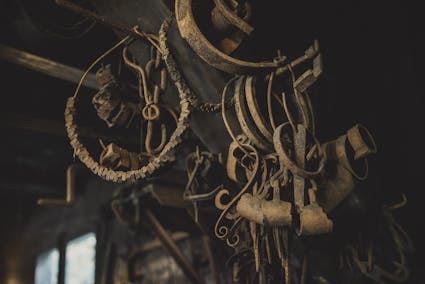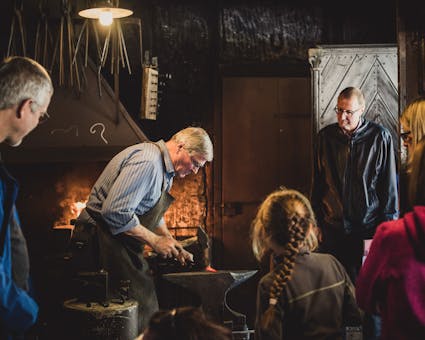1052 – Smithy from Bümpliz, Berne, 19th Century
This blacksmith’s workshop in the style of a farmhouse was built between 1850 and 1900: big doors, green-painted half-timber, galleries and wide eaves.

Transition to Industry
This blacksmith’s workshop in the style of a farmhouse was built between 1850 and 1900: big doors, green-painted half-timber, galleries and wide eaves. A craftsman’s workshop at the transition to industrial business was hidden behind the rural facade: the village smithy from Bümpliz (near Berne) is more than a simple farrier’s shed and was equipped with the latest machinery: thread cutters, grinders and drill presses. These were driven by the same belts, shafts and pulleys that drove the big forging hammer. The power came from an electric motor. Part of the equipment comes from another smithy in Interlaken, but originals from the Bümpliz smithy form the greater part.

Rational and Simple
Not only does the equipment of the ground floor smithy hint of the coming industrial age – so do the building materials for the whole house: practically all of the wood for the rough construction and for the interior outfitting was machine-cut. The half-timber construction which today seems so cosy was not used for the romance of it but because it was relatively simple and cheap.

Working and Living
Horses were shod under the long roof before the house. In the rear of the smithy, whose heart was the great forge, there was once a saddlery. The external stairway to the two upper stories leads to a change in scenery: out of the smoke and heat of the workshop into a living zone with a bourgeois parlour and a well-appointed kitchen in the tone of the times.

Ballenberg
Swiss Open-Air Museum
Museumsstrasse 100
CH-3858 Hofstetten bei Brienz
Company holidays
24 December 2025 to 11 January 2026
Opening hours Administration
3 November 2025 to 8 April 2026
From Monday to Friday
8.30 am to 11.30 am
1.30 pm to 4.30 pm
Opening hours
9 April to 1 November 2026
10 am to 5 pm daily